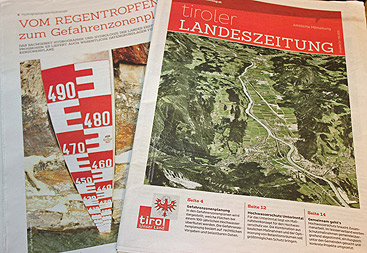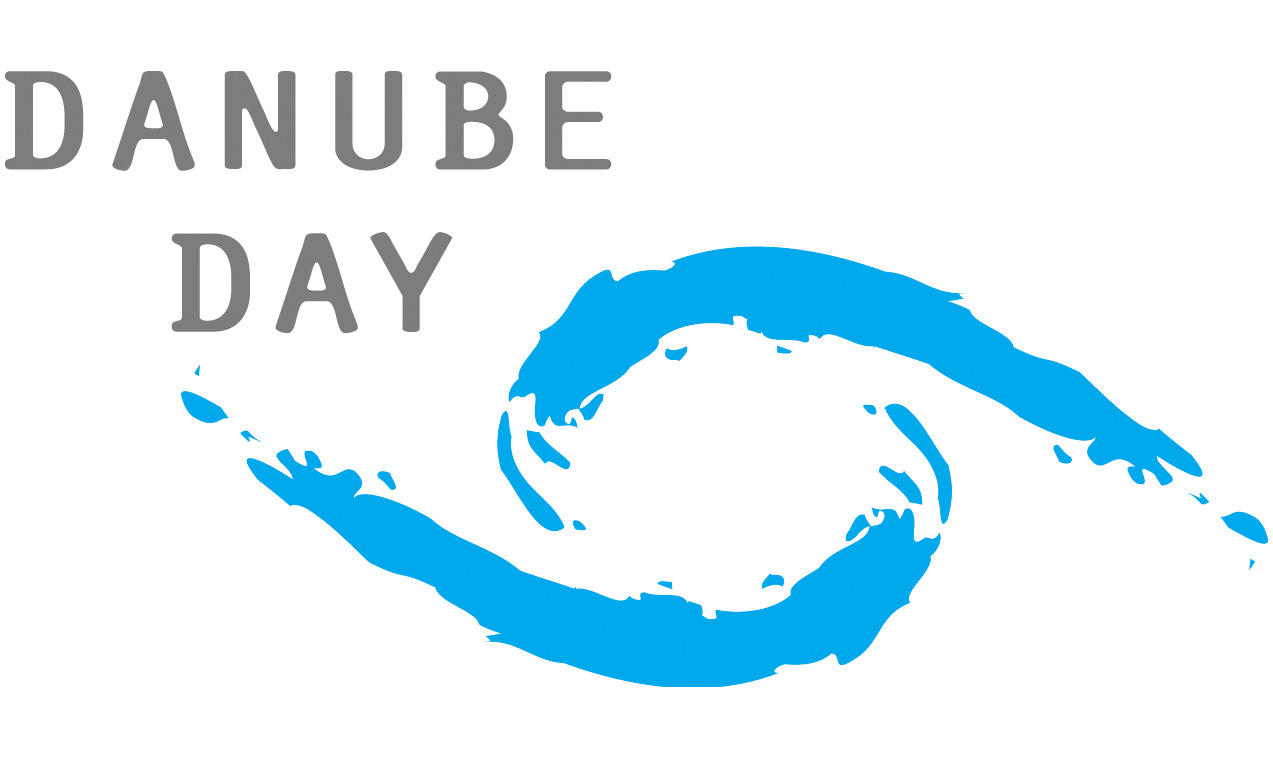Danube Watch 2/2016 - Flood protection in Tyrol – acceptance through communication
Flood protection in Tyrol – acceptance through communication
Plans are under way to make the densely populated, and economically strong, Lower Inn Valley in Tyrol flood-proof. But achieving this will require a dialogue-based planning process.

The population of the Lower Inn Valley was kept informed about flood protection through a special edition of the local newspaper.
© Province Tyrol
The Inn River is one of three rivers contributing the most water to the Danube and therefore one of the tributaries with a significant flood risk. The last flood on the Inn in 2005 caused ¤30 million in damage in the Tyrolean Unterland. According to the current hazard zone plan, 360 hectares of settlement and business zones, including 4,400 residential and industrial buildings from the east of the provincial capital of Innsbruck to the Bavarian/German border, may be affected by a 100-year flood.
To plan flood protection for these areas, the Province of Tyrol and the Federal Water Engineering Administration are relying on a strategy of communication and dialogue. Raising awareness of flood risks and winning acceptance for flood protection is critical in the affected municipalities – because ultimately the municipalities (in the form of water associations) will implement the flood protection project.
Compensation in the region. Flood control in the project area must not lead to an aggravation of the flood situation in downstream areas. This means that any aggravation because of protective measures in the form of retention actions in the region has to be compensated. Flood protection, therefore, is only possible when it is inter-municipal. The municipalities will have to coordinate their efforts and achieve compensation through the means of a water association which still has to be founded.
“The Province of Tyrol is carrying out extensive preparatory work, because in the Lower Inn Valley only inter-municipal flood protection will work," says Deputy Province Governor Josef Geisler, responsible for water management in the region.
However, not all municipalities and residents along the 75 km river will benefit to the same extent from the flood protection. The population groups who will benefit from the protection in future do not correspond to those groups who provide land for protection. Frequently, the two groups are not even located in the same municipality – and this in a region which, apart from natural hazards, is also characterised by conflicting uses and extremely high land prices.
Dialogue-based planning process. In view of the complex initial situation, it will be necessary to make all stakeholders aware of the objective and to pursue an inclusive dialogue. Therefore to implement flood protection measures, the Province of Tyrol, together with the consulting firm wikopreventk, launched a multi-year inter-municipal dialogue process in the Lower Inn Valley. Various target groups will participate during the planning process: the Austrian Federal Ministry for Agriculture and Forestry, Environment and Water Management (BMLFUW), the Tyrolean provincial government and the specialist departments of the province, lobby groups, mayors and councillors of the affected municipalities, land owners, in particular farmers, the population at large, and the media.
“The complex technical and hydraulic planning is a tremendous challenge," says Project Manager Markus Federspiel from the water management department of the Province of Tyrol. “We are, therefore, asked to translate technical topics in such a way that the stakeholders can understand why and how we arrive at our planning results.”
Structured information and a regular exchange are intended to ensure that all parties involved look for common solutions and do their best to deal with the imminent conflicts step by step. Consequently, different formats of exchange are required for different target groups.
Systematic involvement of stakeholder groups. The entire provincial government will be continuously informed about the planning both personally and through a newsletter. In addition, bi-weekly internal discussions of the provincial government will coordinate all activities across all departments.
Flood planning meetings will be held regularly where experts will update representatives of the municipalities about planning progress, provide background information, and coordinate public communication and involvement activities. Another task force composed of mayors will exclusively deal with the creation of the new water association and will use the planning as the basis for the required compensation.
An advocacy and lobby group of farmers will be kept informed about the newly designed compensation model for the utilisation of land for optimised retention areas, and retention area meetings will present planning details to the land owners concerned. In addition to all the structured formats, comprehensive individual meetings will be held with stakeholders and multipliers in the region.
The public participation process will be moderated and continuously adapted and, ideally, would lead to a result that is acceptable to all. However, while the outcome of the controversial dialogue will surely not satisfy everybody, it will contribute to creating an atmosphere in which solutions can be found.
Open and transparent information. However, dialogue alone is not enough; communication and media work regarding flood protection is necessary. For this purpose the Province of Tyrol produces its own publications and using traditional media. Important findings of the planning meetings as well as milestones of the project are communicated in form of press releases and press conferences, and any opportunities are used to make the public even more aware of flood protection, for example by publishing the national flood risk management plan.
In 2015, more than 30,000 households in the Lower Inn Valley received a 24-page special edition of the regional newspaper Tiroler Landeszeitung, which focused on flood protection. The subjects ranged from the drafting of the hazard zone plans to the presentation of possible protection measures.
In a situation where one's own interests are threatened it is a tremendous challenge to foster a dialogue. However the imperative of all these activities is the same: to provide open communication and transparent information. This contributes to keeping the focus on the ultimate objective – flood protection for homes and buildings and the safety of everyone living in the region.
For more information, please visit:
www.tirol.gv.at/hochwasserschutz.







